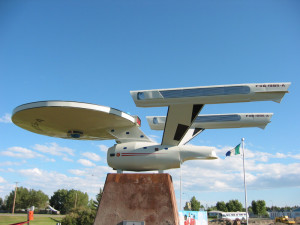Since I’m somewhat of a technological savant, I often get asked questions such as, “What is technology, anyways? Isn’t that just a fancy word for ‘fire’?”
People who ask this question are idiots so I typically ignore these questions.
What I can’t ignore is this question: “How can the meeting industry optimally leverage the value of multi-faceted inter-spatial converging technology platforms to conform to the future demands  of intergenerational, multi-user groups in a post-dynamic, ultra-technological world?”
of intergenerational, multi-user groups in a post-dynamic, ultra-technological world?”
In other words, “Can I still use a flip chart in my presentations?”
As someone who not only uses flip charts, but actually owns several flip charts, and makes use of them frequently during dinner parties and on romantic dates with my wife, I can confidently say this about that: “Take a breath. Yes, yes you can still use a flip chart.”
Flip charts have always been with us, and they always will be. Seriously. Early speakers (circa 30,000 BC) used to draw flip charts on cave walls to explain the concept of flip charts even though they didn’t exist yet. How cool is that? (Answer: it’s so cool, I’m going to go journal about it tonight on one of my flip charts.)
But you may be wondering with the speed of technological change sweeping over us like a giant computerized broom, what other technological advances can the meeting industry leverage, or at least, pretend to make use of because it’s really cool and looks like something Captain Picard would have used on Star Trek?
Here are a few predictions about some new inventions and trends that will take the meeting industry to warp nine in the near future (please note: we are currently at warp 1.3, so this is very exciting stuff):
3-D Meetings. Thanks to the movie Avatar, more and more meetings will feature 3-D experiences, such as delegates actually showing up in person, wearing funny sunglasses, and touching each other’s face in astonishment as they explore the exciting third dimension.
Virtual Meetings: Virtual meetings will, however, virtually overtake traditional 3-D meetings to the point that virtually no one will even need to show up anywhere anymore (much like my last public seminar), let alone get out of bed in the morning.
Downloadable brain implant technology will allow conference attendees to simply download meeting content directly into their brains, thereby ensuring presenters never have to deliver content again, causing thousands of motivational speakers to heave a huge sigh of relief.
PowerPoint™ technology will be superseded by SuperDuperReallyPowerfulPowerPoint™ , resulting in even longer delays to the start of opening sessions. (The upside being that some of the new slide transitions will blow conference delegates’ minds.)
Hybrid Meetings. More and more so-called “hybrid meetings” will feature attendees driving their Toyota Prius at breakneck speeds to get to the event, where they will then dine on sandwiches made from ethanol.
This isn’t so much a technological change, but more of a prediction around meeting nomenclature: circa 2027, a U.N. sanctioned language committee will officially reassign the word “podium” to mean “lectern”, since evidently people will never, ever grasp the correct definition anyways. This seemingly simple change in language will save meeting planners thousands of hours in lost time and mass confusion.
Technology speakers will be unable to keep up with the ever increasing rate of technological change, thus making them obsolete. Ironic, no?
Advances in green technology will accelerate. Eventually everything from table place settings, to attendee bags, to flip charts, to the very sun itself, will be solar-powered. Speakers, however, will increasingly be powered by wind energy.
Flip chart marker makers will introduce a new color called fandango-banana-rama. Otherwise, flip chart technology will stay pretty much the same as it has when it was first conceived back on that cold, rainy Tuesday morning in 30,000 BC.
So there you have it. Nine technological advances that will dramatically alter the time-space continuum of the meeting industry.
(Incidentally, in the future, due to tremendous gains in new technology, all top-10 lists will require only nine items. )
Michael Kerr is a Canadian Hall of Fame Speaker, highly in-demand international keynote speaker, and the creator of the Culture Leadership Online Academy. Michael is also the author of 8 books, including: The Humor Advantage: Why Some Businesses Are Laughing All the Way to the Bank; Hire, Inspire, and Fuel Their Fire; and The Jerk-Free Workplace: How You Can Take the Lead to Create a Happier, More Inspiring Workplace. www.MikeKerr.com


